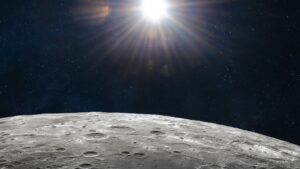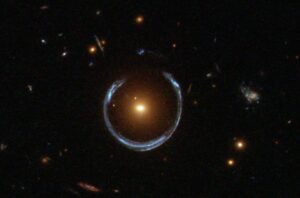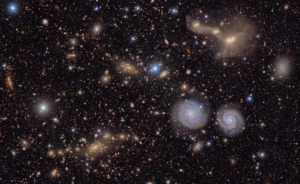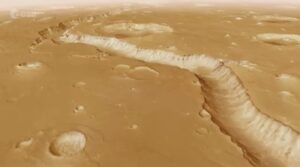Mars has two moons, Deimos and Phobos. They have opposite fates. Deimos is spiraling outward and one day will leave the red planet’s orbit altogether. Meanwhile, Phobos is getting ever closer. Eventually, it will crash into Mars.
This may sound dramatic, but Phobos is actually moving toward the planet at a glacial pace. To be precise, 1.8 meters every 100 years. At that rate, it will collide with Mars in 50 million years.
Scientists have been aware of the moon’s course for years, but as the Perseverance Rover gathers more data on Mars, they have been able to predict more accurately when this will happen.
“Eclipse observations from the surface of Mars over the last two decades have also allowed scientists to refine their understanding of Phobos’ slow death spiral,” NASA said in a statement.
Last year, the little rover captured astonishing footage of a solar eclipse on Mars as Phobos crossed the face of the sun.
“I knew it was going to be good, but I didn’t expect it to be this amazing,” said mission operations specialist Rachel Howson.
This is not the first time such an event has been caught on camera. Other rovers recorded eclipses in 2004 and 2019, but these are by far the clearest images ever. They are also the only ones in color.
Perseverance has been on Mars for almost two-and-a-half years. It has collected information on geology and searched for signs of ancient microbial life. NASA hopes that it will ultimately help them put humans on Mars. The path of this “doomed” moon will not hamper their efforts.

Official crew portrait for Artemis II. From left, Christina Koch, Victor Glover, Reid Wiseman, Jeremy Hansen. Photo: NASA
Humans to Mars
The Artemis Mission will precede any attempt to land on Mars. With Artemis, astronauts — including the first woman and first person of color — will once again land on our own moon.
“We will use what we learn to take the next giant leap: sending the first astronauts to Mars,” NASA states on its website.
Next year JAXA, the Japanese space agency, hopes to further our knowledge of the two moons. Their spacecraft will carry out flybys of Deimos and try to land on Phobos.
It will then collect rocks from the surface of the satellite. This would be the first material collected from another planet’s moon. It would also help answer the question of the moon’s origin.

Phobos. Photo: NASA
Phobos is the larger of Mars’s two moons. Its irregular shape is between 18 and 27km, making it 157 times smaller than our own moon. There are two theories about how both moons came to be. One, they were previously asteroids, trapped by the planet’s gravitational field. Two, the little moons were created from a massive impact, like our moon.
The moons of many planets confront fates similar to Deimos and Phobos. Like Deimos, for example, our own moon is getting further away from our planet, at a rate of 1.5 inches a year.
“About 600 million years from now, Earth will experience the beauty and drama of a total solar eclipse for the last time,” lunar scientist Richard Voindrak told Science Daily.






